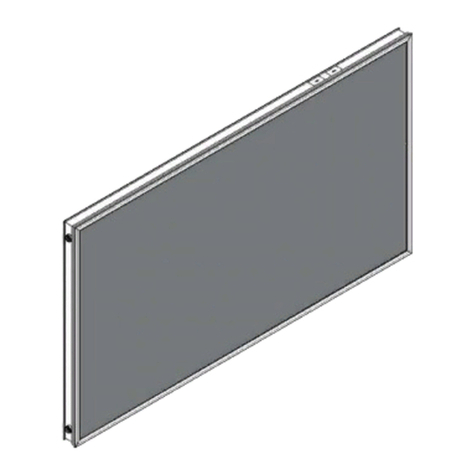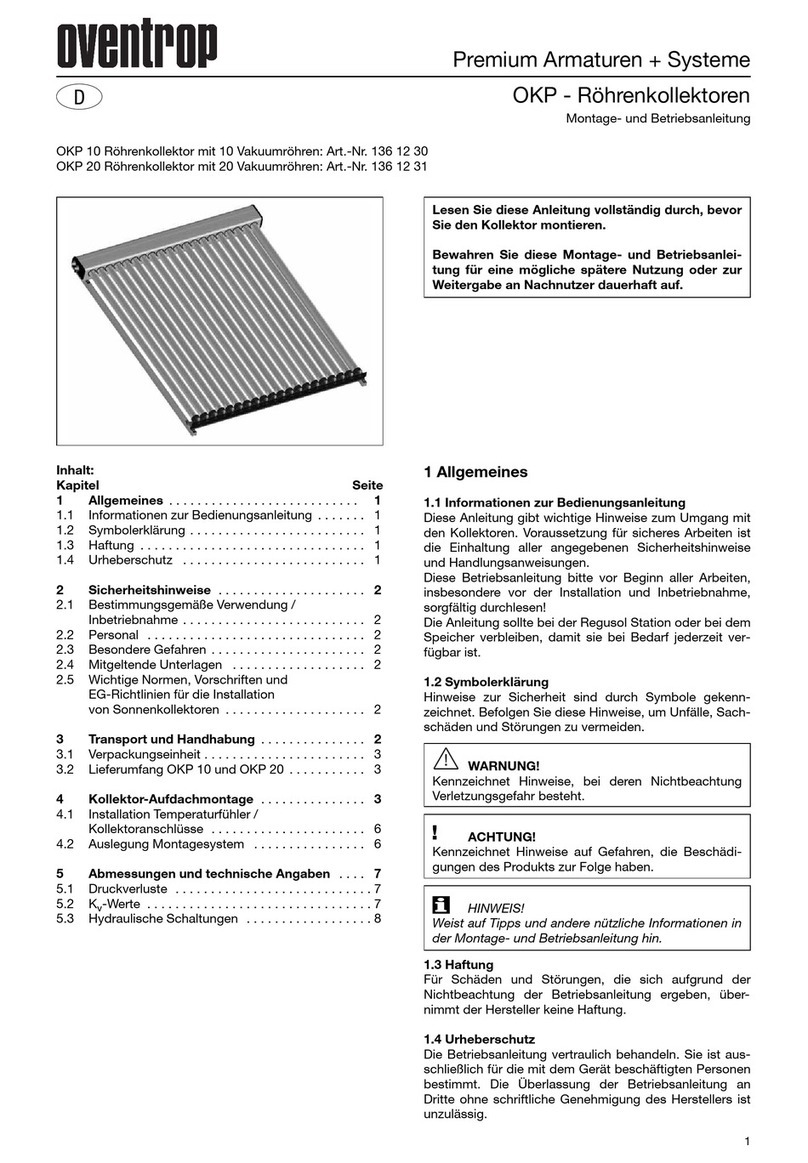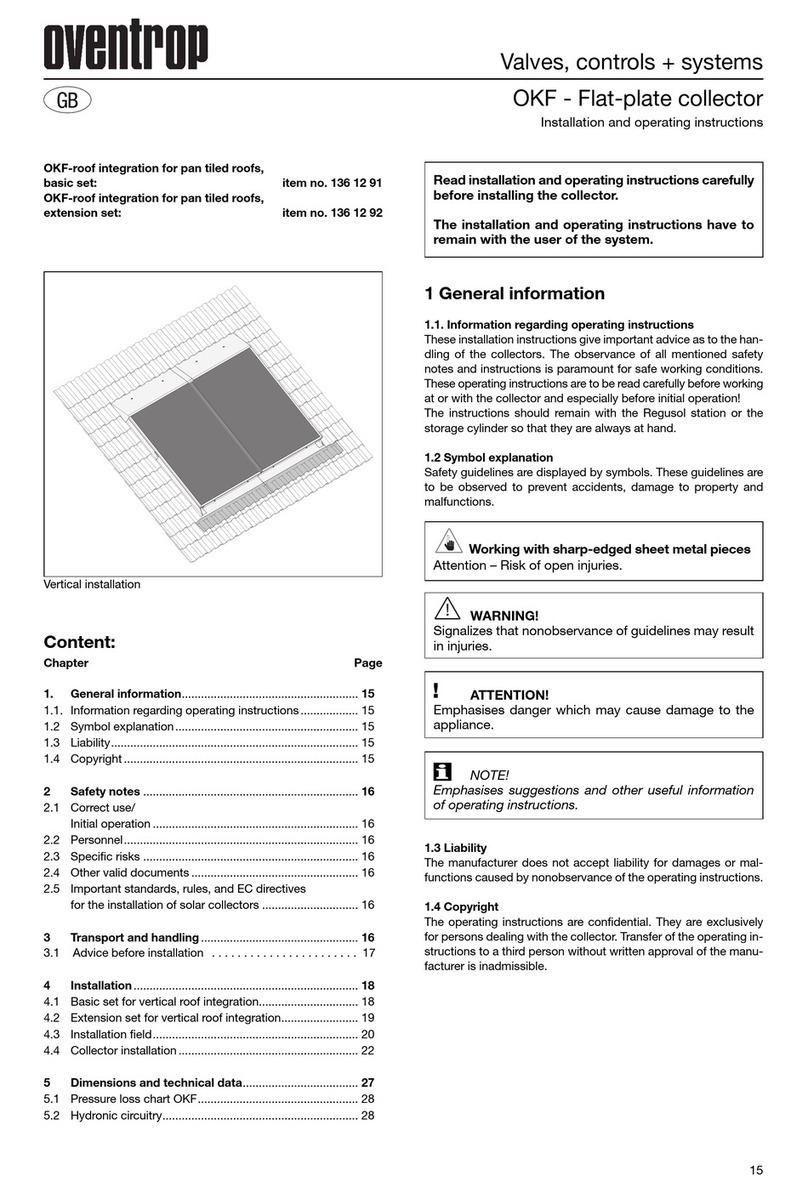
5
082809
Solar thermal system design guidelines
Solar hot water systems are simple in principal but complicated in practice. This guide is designed to
describe and explain the process for designing a solar hot water system. There are many ways to
design a solar hot water system to achieve the same end result. The two system types that Oventrop
uses are external heat exchanger systems (i.e. the Regusol X) and Immersed coil heat exchangers (i.e.
internal coil tanks). All of Oventrop’s systems are based on one of these two variants.
Solar Design Basics
Incoming solar radiation at the earth’s surface on a perfectly clear day is approximately 300 BTU/H
per square foot. With that said, solar collector performance depends on several factors. These
factors include, but are not limited to: ambient temperature at the location of the solar collector,
required operating temperature of the working uid in the collector, incoming solar radiation
(energy), geographical location of the collector, shading of the collector, and inclination angle of the
collector.
The difference in temperature between the working uid and the ambient temperature drives the heat
loss of the solar collector. This temperature difference has the greatest inuence on the solar
collector’s thermal efciency. This efciency measures the solar collector’s ability to convert
incoming solar radiation to usable heat in the form of a hot working uid. This hot working uid can
be used for any application.
The availability of solar radiation (energy) is dependent on weather, time of year, site shading, and
collector inclination angle. Throughout the year, the distance of the sun from the horizon will
change from the longest on the rst day of summer to the shortest on the rst day of winter. This
translates to a 47-degree change in the sun’s angle with respect to the collector throughout the year.
The optimal inclination angle to minimize this change and maximize year-round performance is
equivalent to the latitude at which the collector is located. Shading at the collector site determines
the amount of available solar radiation to which the collector is exposed.
Understanding that all of the above factors affect the performance of the solar thermal collector,
one cannot make a location independent generalization of collector performance.
Design conditions are calculated as the maximum instantaneous solar radiation, in other words, the
most energy the system can handle at any given time. For design conditions we assume the collector
is at an operating efciency of 75%, on a clear day, facing south, with no shading. Due to this efciency the
maximum output of the solar collector at design is rated at 225 BTU/H per square foot. This value is in no
way a guarantee or estimate of any Oventrop collector’s performance. The table below shows the design
BTU/H
rating of each Oventrop solar collector.
Collector Type Design Conditions BTU/H rating
OV 5-16 Evacuated tube collector 6,277 BTU/H
OVF-21 Flat plate collector 4,230 BTU/H
OVF-32 Flat plate collector 6,615 BTU/H
OVF-40 Flat plate collector 8,280 BTU/H
Table 2, below, shows the design ow rates for each Oventrop collector type.
Collector Type Design Flow Rate per collector
OV 5-16 Evacuated tube collector 0.75 GPM
OVF-21 Flat plate collector 0.525 GPM
OVF-32 Flat plate collector 0.80 GPM
OVF-40 Flat plate collector 1.0 GPM
section two






























